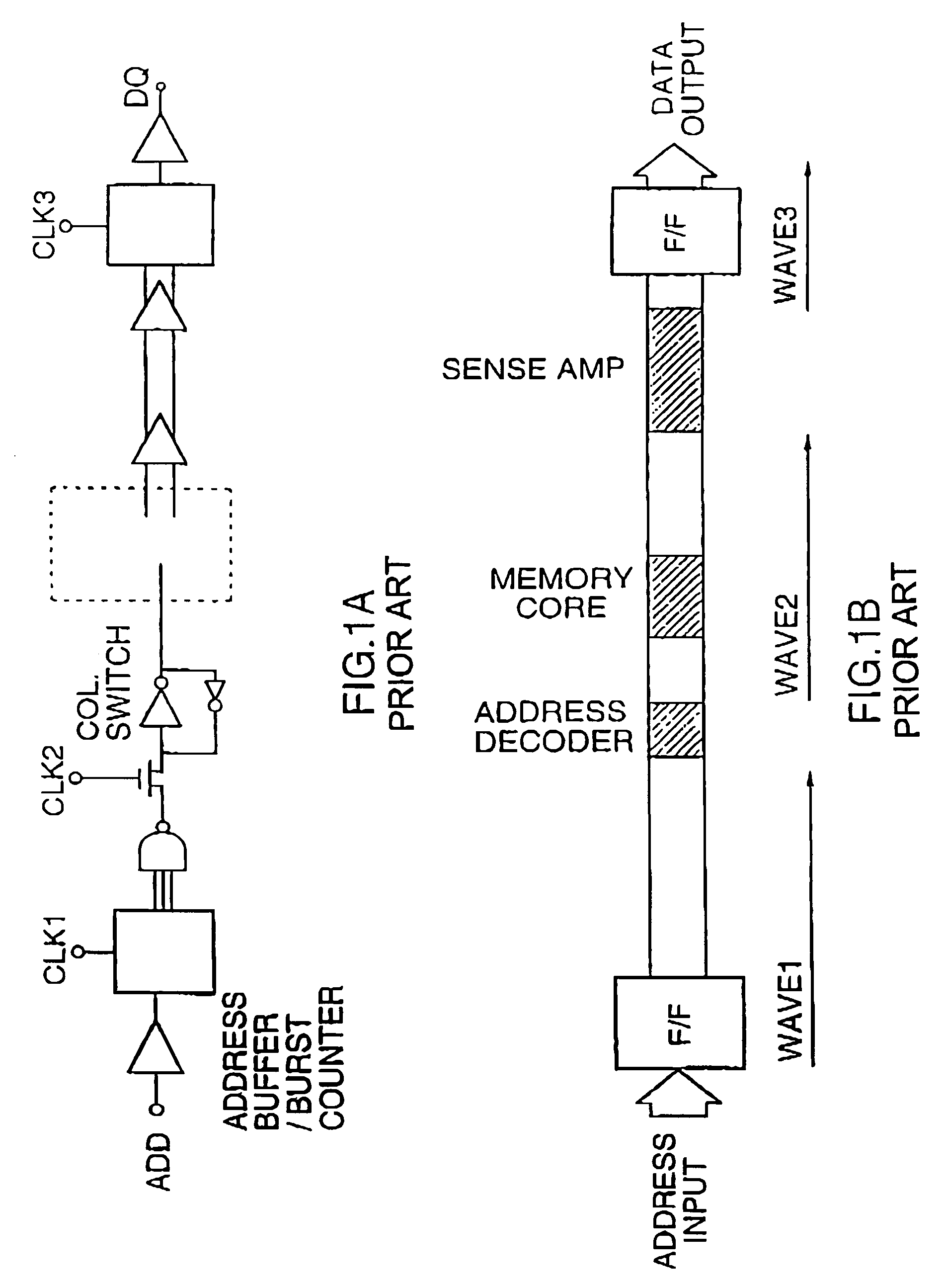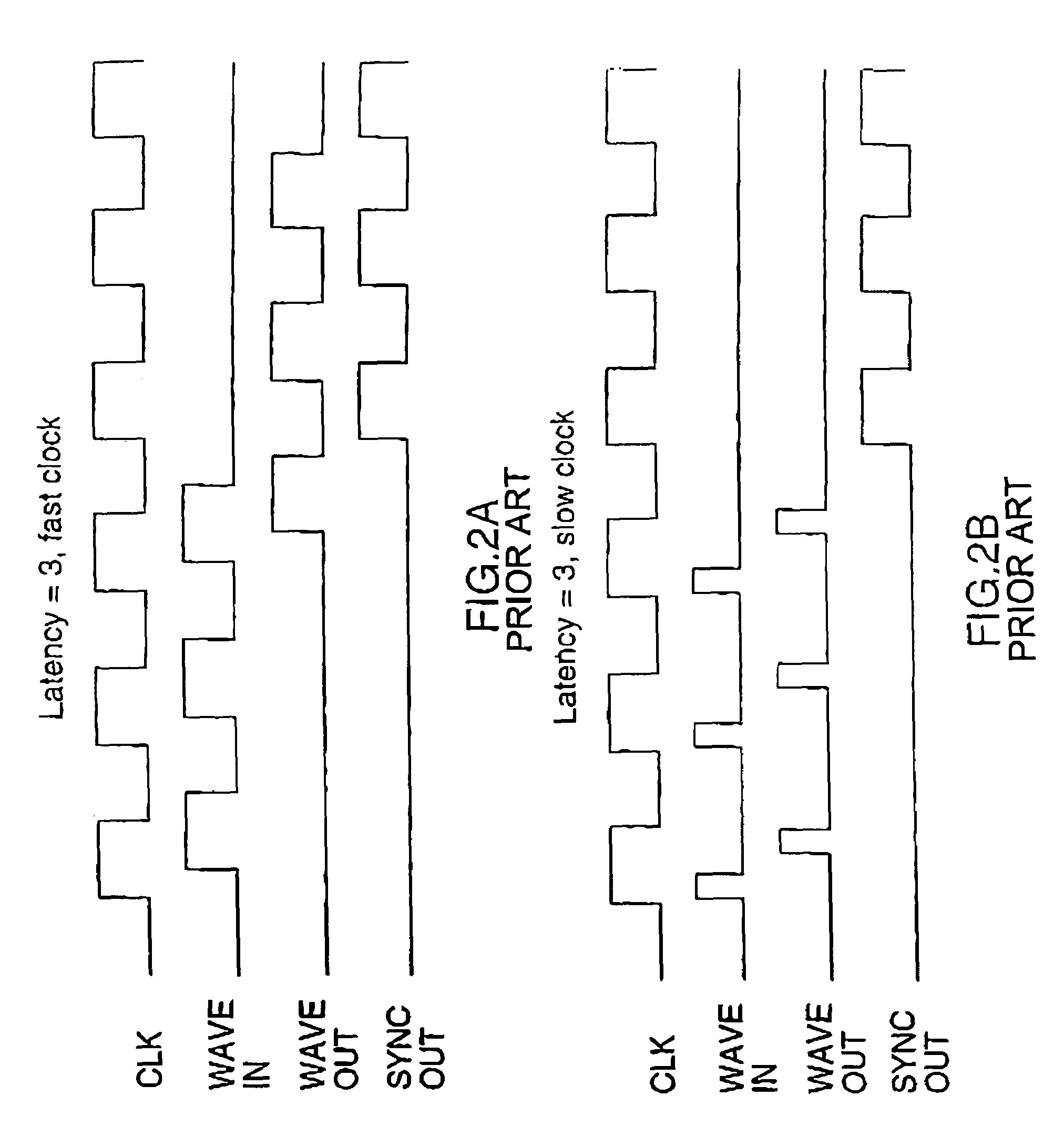Semiconductor memory asynchronous pipeline
a technology of memory asynchronous pipeline and semiconductor memory, applied in the direction of memory adressing/allocation/relocation, information storage, transmission, etc., can solve the problems of different clock adjustments, delayed subsequent commands, and equal read latency
- Summary
- Abstract
- Description
- Claims
- Application Information
AI Technical Summary
Benefits of technology
Problems solved by technology
Method used
Image
Examples
Embodiment Construction
[0040]In the following discussion, like numerals refer to like elements in the figures and signals asserted low are indicated interchangeably with an x or an overscore associated with the corresponding signal name. Referring now to FIG. 3, a schematic diagram of a pipelined semiconductor memory according to a generalized embodiment of the invention is shown generally by numeral 20. The memory includes a core memory array 22 having a read path 24, defined between an address input port 25 and a data output 32. The read path 24 is broken up into latency stages 27, each of which is latched by respective asynchronous control signals 28. A synchronizing circuit 30 is coupled to the last latency stage of the read path in order to resynchronize the data to the system clock CLK at output 32 of the read path. The data is synchronized to the system clock CLK a predetermined number of clock cycles after the application of an address signal A to the address input 25, i.e. depending on the CAS la...
PUM
 Login to View More
Login to View More Abstract
Description
Claims
Application Information
 Login to View More
Login to View More - R&D
- Intellectual Property
- Life Sciences
- Materials
- Tech Scout
- Unparalleled Data Quality
- Higher Quality Content
- 60% Fewer Hallucinations
Browse by: Latest US Patents, China's latest patents, Technical Efficacy Thesaurus, Application Domain, Technology Topic, Popular Technical Reports.
© 2025 PatSnap. All rights reserved.Legal|Privacy policy|Modern Slavery Act Transparency Statement|Sitemap|About US| Contact US: help@patsnap.com



